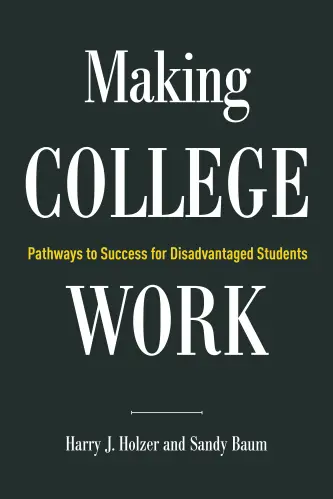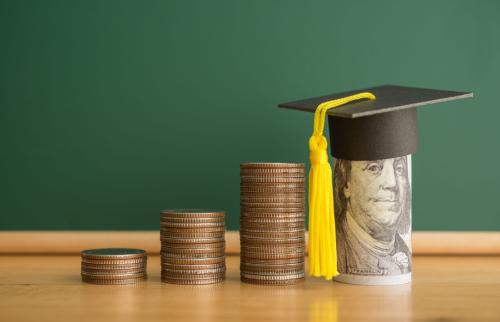Education is supposed to be “the great equalizer”, in Horace Mann’s famous phrase. But too often, the education system ends up perpetuating inequality, especially across generations. The higher education sector is an particularly acute case in point, as a new book from Harry Holzer and Sandy Baum, Making College Work: Pathways to Success for Disadvantaged Students, vividly demonstrates.
The returns to a post-secondary education are variable, but on average remain high. The main problem is not unfair competition in the labor market, it is unequal preparation for it. As I write in Dream Hoarders, “the labor market is where inequality is expressed, not where it is created”.
We’ll be discussing how to make college work better, and more fairly, with Baum and Holzer at an event here at Brookings tomorrow. (Sign up here to attend in person or here to watch the webcast.) The book is rich in data, as well as in positive ideas for reform. One chart that jumped off the page shows the attainment of credentials by both family background and high school GPA, which has been shown to be a better predictor of college performance than SAT scores.
Here’s a simplified version of the Holzer-Baum chart* showing students achieving a Bachelor’s degree:

There seem to me to be three key messages here:
- Prior academic achievement matters a lot for the chances of getting a BA. More than half (55%) of even the poorest kids (family income of less than $32,000) who have a GPA of 3.5 or more get a BA. Conversely, only 29% of the most affluent students ($92,00 or more) with a sub-3.0 GPA do so.
- But family background still counts too, even within these three GPA buckets: 29% is a lot higher than 13% (for the poorest kids with low GPAs).
- Family income seems to matter most in the middle of the academic distribution. As Baum and Holzer write: “Among those in the 3.0 to 3.4 GPA category, the gap in bachelor’s degree attainment between the highest- and lowest-income dependent students is a stunning 37 percentage points (56 and 19 percent, respectively).”
For middling students, getting a BA might rely more on parental support and/or pressure, or access to institutions with better completion rates, or a whole range of other factors. But it is clear that prior academic performance is far from the whole story.
The bottom line: unless colleges become better equalizers, social mobility will remain stagnant.
* Note: Only dependent students shown, who are dependent on their parents for purposes of financial aid allocation.
The Brookings Institution is committed to quality, independence, and impact.
We are supported by a diverse array of funders. In line with our values and policies, each Brookings publication represents the sole views of its author(s).






Commentary
Colleges as class reproduction machines
September 19, 2017